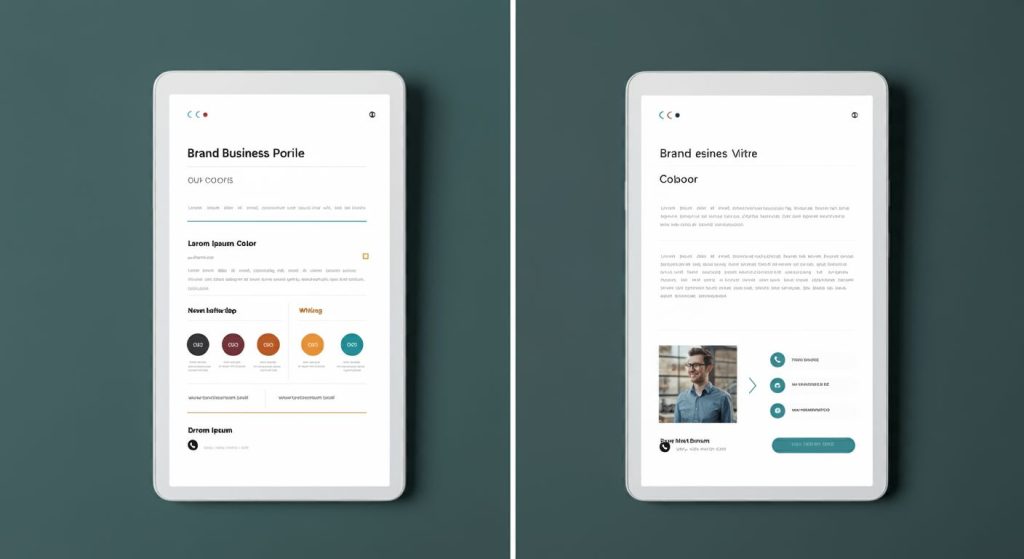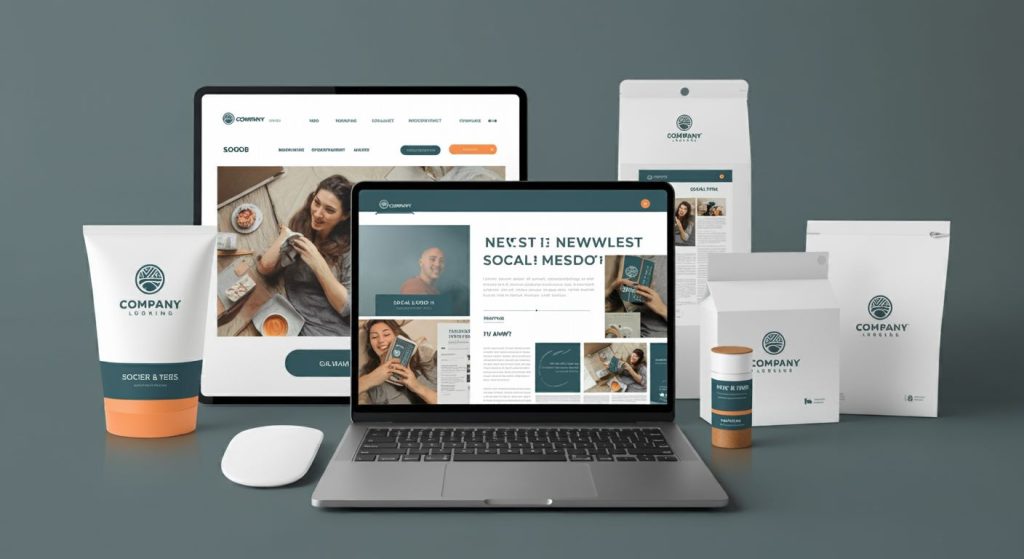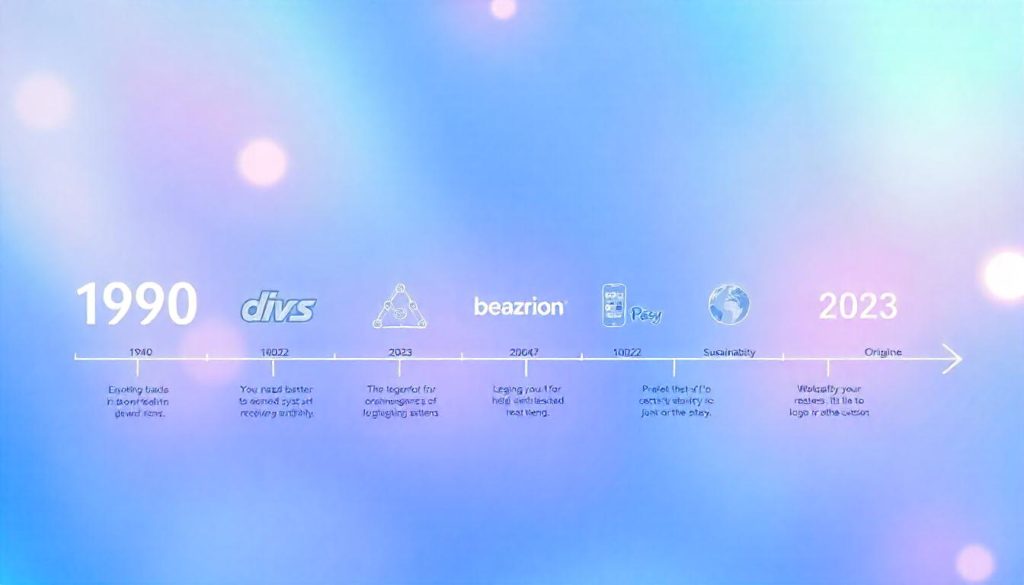Branding is the backbone of any successful business. It is more than just a logo or catchy slogan; it is how your audience perceives your company. While good branding can elevate your business, poor branding—or common branding mistakes—can have devastating effects. This article will dive into the most critical branding errors and how to avoid them, ensuring your business thrives in a competitive market.

Table of contents
1. Lack of a Clear Brand Identity

One of the most prevalent mistakes businesses make is failing to establish a clear and cohesive brand identity. Your brand identity includes your logo, typography, color schemes, and messaging. Without consistency, your audience might struggle to connect with your brand or even recognize it.
Consider a scenario where a business uses different fonts, colors, or tones of voice across its platforms. This inconsistency dilutes brand recognition and confuses potential customers. A strong brand identity communicates who you are, what you stand for, and what customers can expect from you.
To avoid this mistake, start with thorough market research to understand your target audience. Use these insights to craft a brand identity guide that details your logo specifications, color palette, typography, and tone of voice. Consistently applying these elements across all platforms will reinforce your presence and build trust.
2. Ignoring Your Target Audience

A major branding pitfall is ignoring or misunderstanding your target audience. Branding efforts must resonate with the people you aim to serve. When your branding fails to align with your audience’s needs, values, or preferences, it can lead to disinterest or alienation.
For example, a business targeting Gen Z might struggle if it uses overly formal language or outdated visuals. Conversely, a professional service firm might lose credibility with casual or meme-like branding. Understanding your audience’s demographics, preferences, and pain points is crucial.
Conduct regular surveys, focus groups, or social media polls to stay in tune with your audience. Adjust your branding strategy as trends and preferences evolve to remain relevant. Businesses that ignore this step often fall behind their competitors, who tailor their branding to better meet customer needs.
3. Overcomplicating Your Branding

Simplicity is key in effective branding. However, many businesses fall into the trap of overcomplicating their branding by incorporating too many elements, such as excessive colors, cluttered designs, or overly detailed logos.
Overcomplicated branding can overwhelm your audience and make your message harder to understand. Think about some of the most iconic brands—Apple, Nike, or McDonald’s. Their logos and branding are simple yet incredibly impactful. This simplicity makes them easy to recognize and remember.
Focus on minimalist designs and clear, concise messaging. Avoid adding unnecessary details or gimmicks that distract from your core values. Test your branding materials with diverse focus groups to gauge their effectiveness and ensure clarity.
4. Neglecting Consistent Branding Across Channels

Consistency is the hallmark of great branding. Yet, many businesses fail to maintain this consistency across all their channels. For instance, a company might use one logo on its website, another on its social media profiles, and a completely different tone of voice in emails.
Such inconsistencies erode trust and weaken brand recall. Customers expect uniformity; they want to recognize your brand wherever they encounter it. A unified approach enhances credibility and fosters loyalty.
To maintain consistency, create a brand guideline document accessible to all team members. This guide should cover design elements, tone of voice, and how to apply these standards across digital, print, and physical channels. Regularly audit your branding to ensure adherence.
5. Failing to Adapt to Market Trends

While consistency is vital, being inflexible in the face of changing market trends is another branding misstep. Trends in technology, design, and consumer preferences shift rapidly. A brand that refuses to adapt risks becoming outdated and irrelevant.
For instance, a brand that clings to traditional advertising methods while ignoring digital platforms like TikTok or Instagram might miss opportunities to engage with younger audiences. Similarly, ignoring sustainability trends could alienate environmentally conscious consumers.
Stay ahead by regularly researching market trends and competitors’ strategies. Innovate without losing sight of your core identity. Adaptation demonstrates that your brand is dynamic and responsive to consumer needs.
6. Copying Competitors Instead of Innovating

While it’s essential to analyze your competitors, outright copying their branding can harm your business. Imitation signals a lack of originality and can confuse customers, especially if they mistake your brand for another.
Originality is a key component of a strong brand. Even in competitive industries, your brand should highlight its unique value proposition (UVP). Whether it’s superior quality, excellent customer service, or innovative solutions, focus on what sets you apart.
Develop your own visual identity, voice, and messaging. Use competitor analysis as inspiration rather than a blueprint. This ensures your branding feels authentic and stands out in a crowded market.
7. Overlooking Emotional Connections

Branding is not just about aesthetics; it’s about creating an emotional connection with your audience. A brand that resonates emotionally fosters loyalty and advocacy. However, many businesses focus solely on visuals and neglect storytelling, values, or experiences that resonate with their customers.
Think of brands like Coca-Cola or Disney, which evoke strong emotions through storytelling and shared experiences. Customers don’t just buy their products; they buy into the feelings these brands generate.
To build emotional connections, focus on storytelling that aligns with your audience’s values and aspirations. Share customer success stories, your brand’s journey, or causes you support. This approach humanizes your brand and makes it relatable.
8. Ignoring Feedback and Analytics

Brands that ignore customer feedback or fail to analyze their performance metrics risk making poor branding decisions. Data provides insights into what works and what doesn’t, while feedback highlights areas for improvement.
Ignoring these inputs can result in continued mistakes, such as targeting the wrong audience or using ineffective messaging. Regularly collect feedback through surveys, reviews, and social media interactions. Use analytics tools to measure branding performance across campaigns and platforms.
By acting on these insights, you can refine your branding strategy and improve customer satisfaction. Businesses that embrace feedback demonstrate that they value their audience, which can strengthen brand loyalty.
Conclusion: Building a Brand That Thrives
Avoiding common branding mistakes is essential to the success and longevity of your business. Your brand is the first impression you leave on potential customers, and getting it wrong can alienate your audience or leave your business overlooked in a competitive market. From establishing a clear identity to staying adaptable and authentic, each aspect of branding plays a vital role in creating a cohesive and memorable experience for your customers.
Remember, branding isn’t a one-time effort—it’s an ongoing process that evolves with your business and market trends. Regularly review your branding strategy, seek feedback from your audience, and be willing to refine and innovate while staying true to your core values. By doing so, you will not only avoid pitfalls but also build a strong, emotionally resonant brand that stands out and fosters long-term loyalty.
Effective branding is more than just a marketing tool; it’s the heart of your business. When done right, it creates trust, inspires loyalty, and ultimately drives growth. Don’t let common mistakes hold you back—take the time to craft a brand that truly reflects your mission and connects with your audience.



